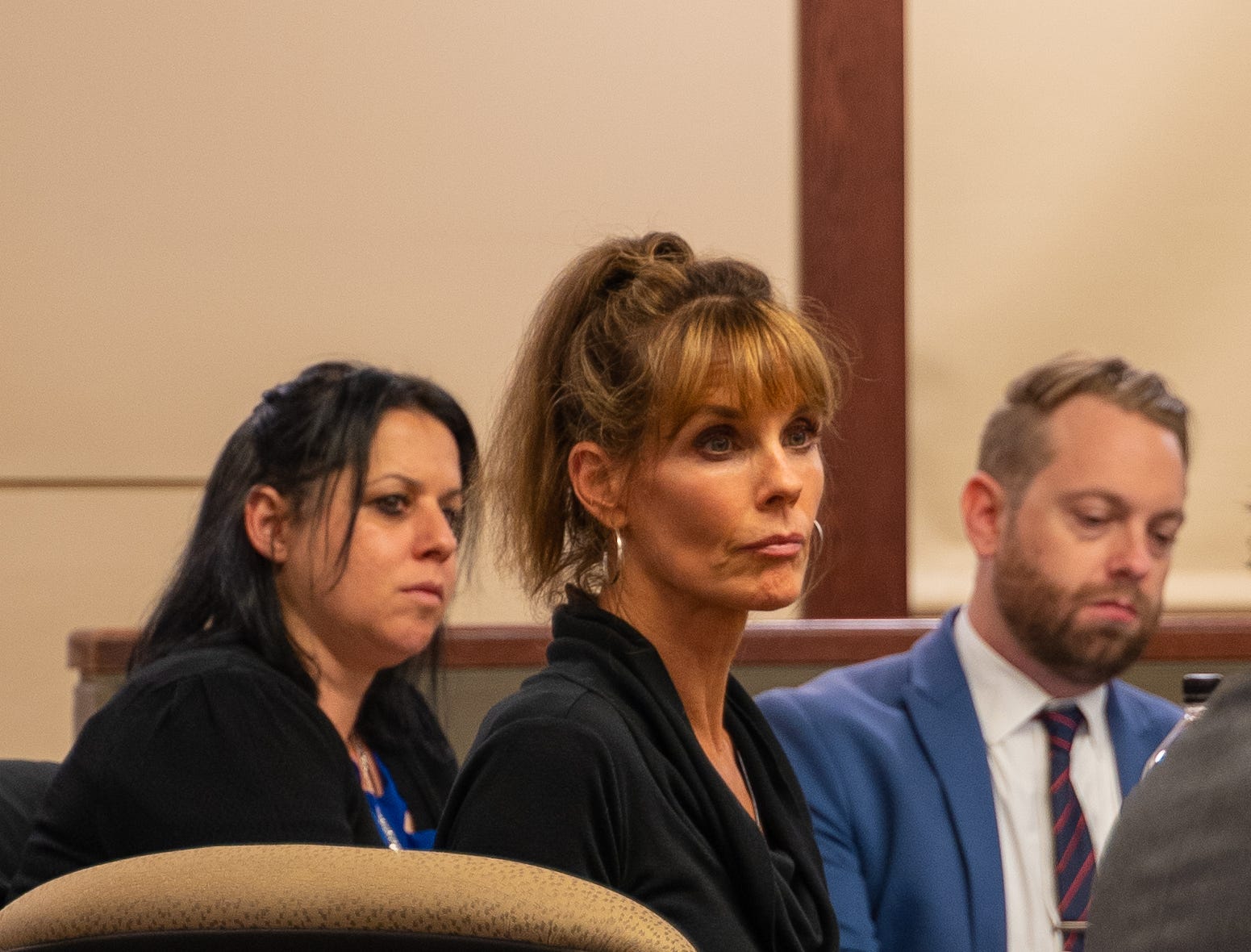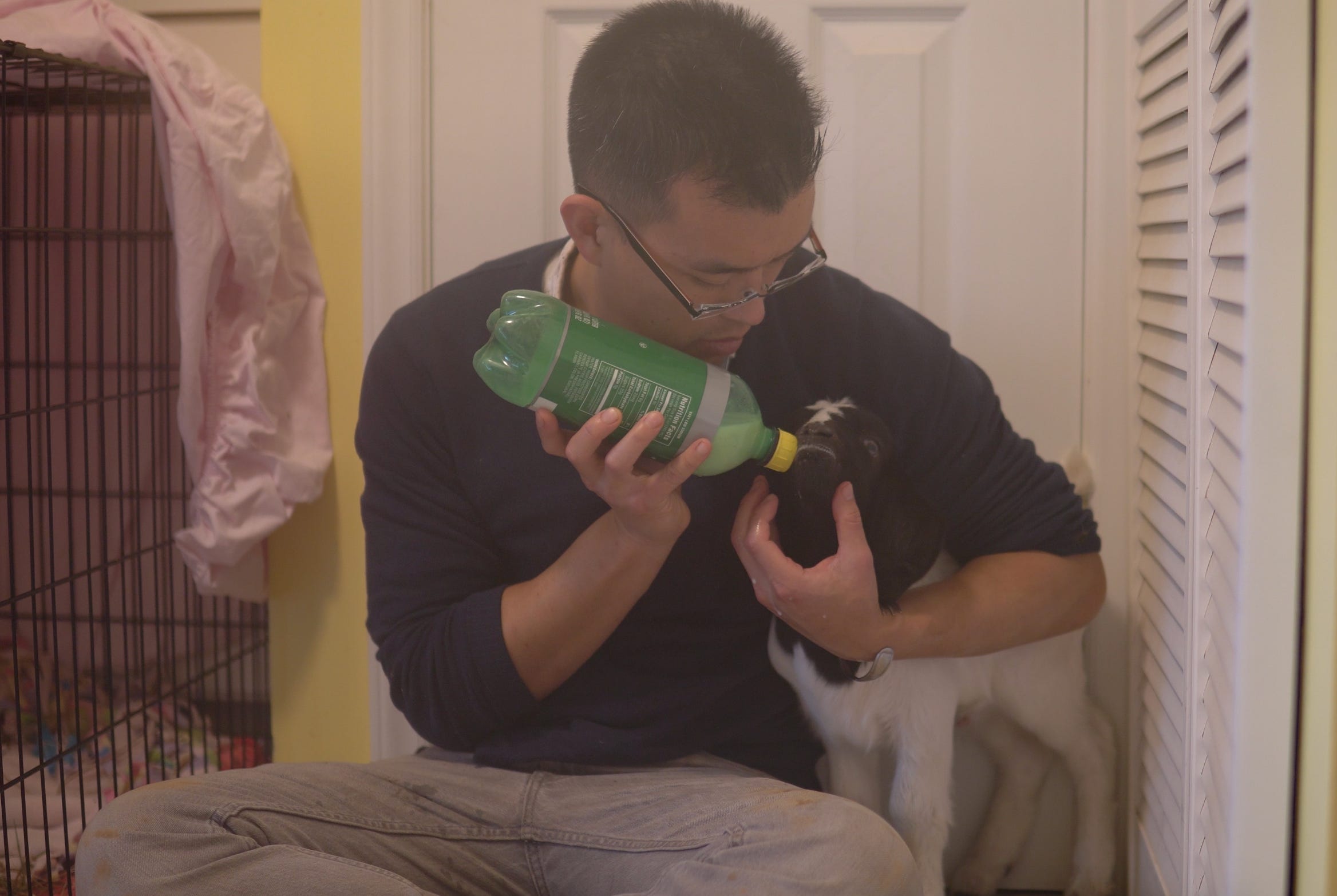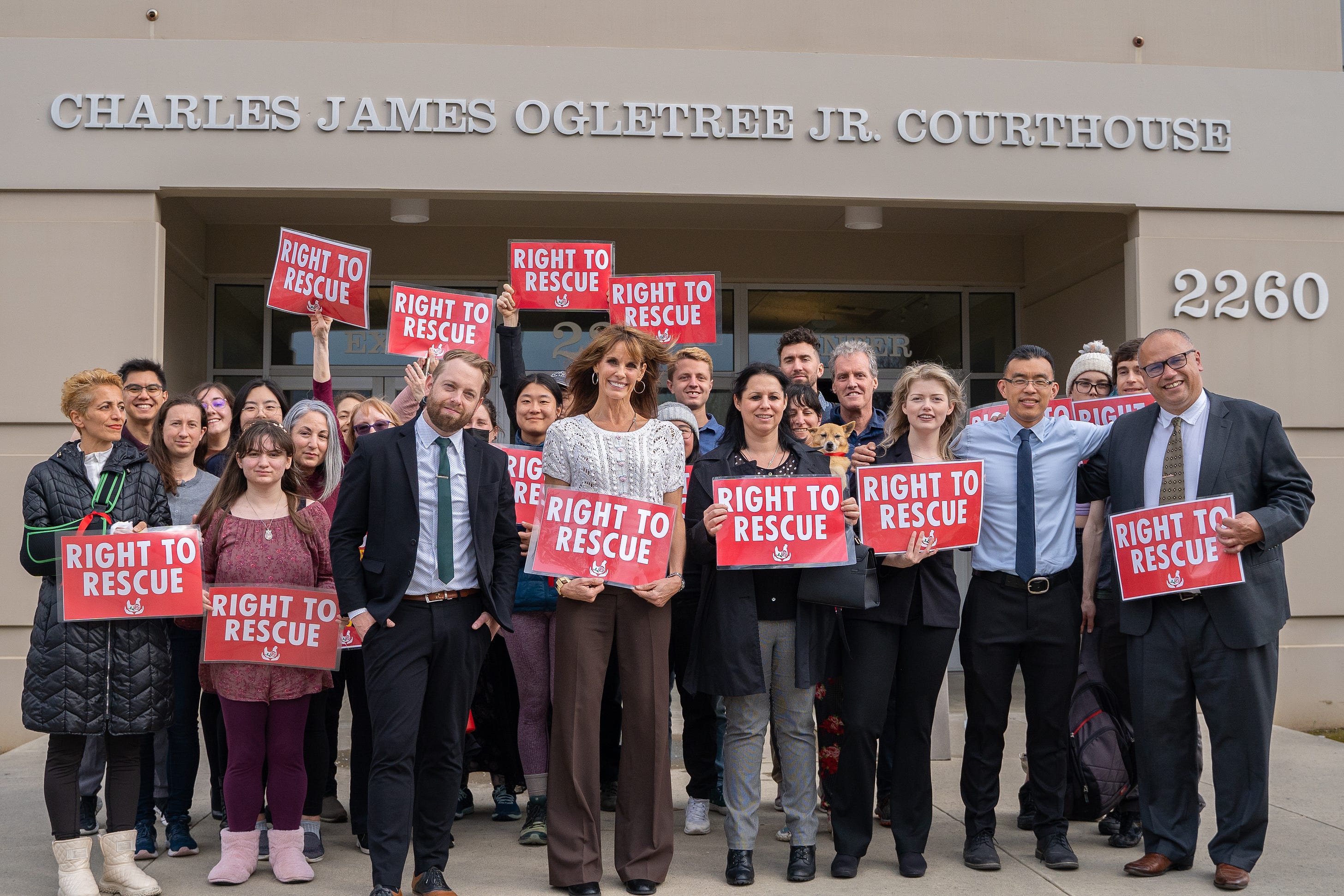|
The Surprising Way Court Cases Create Social Change
It's not by changing the way people think. It's by changing the way people think about what other people are thinking.
What’s up this week
Court cases have a unique and powerful role in creating social change — by shifting social norms. I discuss how this can happen, even when we lose in court, along with the compelling research behind this approach, in today’s newsletter.
A disturbing accident led to a dramatic rescue of 6 sheep in Missouri. But instead of caring for the poor creatures, the University of Missouri veterinary school — without consulting with the rescuers — appears to have killed them all, at the instruction of their “owner.” The Iowa Farm Sanctuary Facebook page is telling the story. Offer them support if you can. This is why we need a paradigm shift, towards animals as persons and not property.
The Simple Heart is launching its monthly call to action for all Open Rescue Advocates, as trial approaches in Sonoma County. If you’re convinced by this blog that every voice counts, then please join us this month, as we are just over 2 months away from one of the biggest trials in animal rights history. Take a look at last month’s meeting description, with special guest Patty Mark, and stay tuned for more.
—
How we won in North Carolina, even though we lost
In late 2021, I faced my first felony trial for rescuing animals from abuse. And, from the start, things were not going well.
First, the judge granted the state’s motion to exclude all evidence or testimony regarding the health or condition of Rain, the baby goat we had rescued. The jury would thus hear a story with bizarre gaps — a bunch of people from across the country decided to barge into a farm to take a baby goat — without any understanding of why we were there. The medical evidence of Rain’s dire condition, including a deadly case of pneumonia, was almost completely absent from the trial.
Then the judge refused to remove a juror who admitted she was biased against animal advocates because her family raised animals for slaughter. This potential juror — who also stated she was friends with the prosecution’s lead investigator — showed clear animosity towards animal rights advocates. But because the judge was able to “rehabilitate” her (i.e., get her to say that she’d follow the law, regardless of her feelings) she was allowed to stay on the panel. This was a clear violation of my constitutional rights, as every defendant has a right to a fair and impartial jury under the Sixth Amendment.
But the last blow came when one of our legal team members heard a few lawyers joking, in the hallways behind the courtroom where jurors also gathered, that “these people are a bunch of sexual predators.” They were referring to the crowd of blue-shirted supporters that could be seen through the window. The group of lawyers, which included the lead prosecutor in the case, had apparently heard about the rumors that have been spread about me and other animal rights activists. But this statement was not just false; it was a serious violation of due process if heard by the jury, as we would not have the right to scrutinize the claim, challenge it with evidence, or even object to its relevance. We would not even know, if it was weighing on the jury’s mind! When I confronted the lead prosecutor about this, we nearly got into a physical altercation.
“You think you’re going to reach me a lesson? I’m going to teach you a lesson,” he said.
It should come as no surprise, given this disastrous start, that the trial ended with a guilty verdict. I was convicted of two felonies. And, even though my sentence was stayed for the duration of my appeal (which is ongoing), that verdict has had major impacts on my life. I cannot travel to Canada or many other foreign countries. My legal license and career are in peril, with ongoing efforts by the industry to disbar me from the practice of law. And I live every day with the knowledge that, to the government of the United States, I am a criminal and felon. All for saving baby Rain.
So it might surprise you to hear that I see the North Carolina case as a win for animal rights.
This is partly because of what we learned from the case. Get out ahead of legal issues that you should be able to win. Don’t hide the ball from the jury. And make a strong moral case. All of these lessons, which were crucial to victory in our next court case in Utah, were learned in North Carolina.
It’s partly because of the impressive and positive media attention we received, including articles in both The Guardian and The Intercept. The court of public opinion matters more than the court of law. And in that courtroom, we won.
But perhaps the most important reason that North Carolina was a win, despite the guilty verdict, is that it demonstrated how, even in defeat, we are able to persuade people of the merits of animal rights. This includes not just the jurors who convicted me, many of whom were moved by my stories of rescuing animals from hell. (The judge allowed me to speak about my prior rescues, but did not allow me to say much about the one I was being charged with.) It includes the judge himself, who softened over the course of the trial and, by the end, decided that he would not sentence me to prison. Most surprisingly, it also includes the prosecutor who I nearly got into a physical altercation with, who hugged me at the end of the trial and told me that our cause was just.
The ability of the animal rights message to reach all of these people’s hearts, even in a hostile scenario, was a powerful demonstration of the power of our message if the message is being heard in the right setting: deliberative, public, and patient. The shift I saw in the prosecutor was one such example. While initially adversarial and even hostile, he listened, for many hours, to my and others’ testimony about our concern for animals abused in food production. I told stories about my experiences in China, watching dogs trembling in livestock cages as they awaited slaughter. Denise Bitz testified about watching a cow chained up, and slowly starving to death — and about the failure of the authorities to do anything about it. And everyone in the courtroom, including the prosecutors, spent an entire week reflecting on these stories. It was hard for them not to be changed.
And this is exactly why I believe these upcoming court cases, including a trial in Sonoma County starting on September 8, and a trial in Dane County starting on November 6, are such important platforms for us to push forward with animal rights. Courtrooms are the spaces where our entire nation deliberates on the most importance issues we’re facing. And risking our freedom to get into the courtroom, especially when animals have otherwise been denied any sort of legal standing, is among the most promising strategies for animal rights.
Indeed, recent research by one of the most important social scientists of the last decade, Betsy Paluck at Princeton, shows why this might be the case. Court cases, especially those that get significant media attention, shift the way the public views social norms. This is worth unpacking a bit. Most advocates think our goal is to change people’s minds. This is, of course, partly true. But Paluck’s research shows that, often, changing someone’s mind is not the most important factor in creating social change. What’s more important is changing a person’s view of social norms, i.e., changing their belief about what other people think about an issue.
Paluck has shown that, in areas as wide-ranging as inter-ethnic conflict in Rwanda to school bullying in the United States, convincing people of what other people think is often more important than convincing them to change their minds themselves. For example, when Rwandans believed that others thought inter-ethnic violence was wrong, they stopped committing hate crimes, even when their personal views hadn’t changed. When kids in US schools were taught that their peers felt bullying was bad behavior, they stopped bullying others even when their own feelings of aggression hadn’t shifted. In short, changing perceptions of social norms may be more important than changing individual beliefs directly, if our goal is enduring and systemic change.
But that just leads to a question: how do we change people’s perceptions of social norms?
It turns out that court cases may be exceptionally powerful at doing exactly that. Paluck and co-author Margaret Tankard, of the RAND corporation, examined perceptions of public support for gay rights both before and after Obergefell v. Hodges, the 2015 Supreme Court case which enshrined gay marriage as a constitutional right. While the case did not change personal attitudes towards gay rights, it did lead to massive and sudden shifts in the perceptions of social norms. Indeed, that single court case shifted perceptions of social norms more than many years of direct advocacy. The reason, I think, is that the case was seen as authoritative and credible in a way that the advocates’ messaging was not. “It’s not just the crazy activists who say things are changing. Even the courts are recognizing it!” Unsurprisingly, for those who follow the research on social norms, policy on gay marriage has gone from controversial to settled since 2015, partly on the basis of the shift triggered by Obergefell.
This brings me back to North Carolina, and our other upcoming trials. I wrote previously about the many factors that led the prosecutor in that case, to go from wanting to fight me, to wanting to hug me, over the course of the week-long trial. One factor I left out, however, that plays an important role in the power of court cases, is visible demonstrations of public support. You see, while there were dozens of people in the courtroom supporting the rescuers, there was no one there to support the animal abusers, even though they were supposedly “victims” of a crime. And it is virtually inevitable, not just for public officials but for all human beings, to be affected by this dramatic difference in social support. The court room is an embodiment of our social norms, but not just with the jury — who have an incomplete and often incoherent narrative presented to them — but for everyone else in court. And what is seen in the courtroom is, in a sense, a thermometer on how our public views an issue. The court room is the social norm, come to life.
It’s in that spirit that, in the weeks to come, I’ll be writing about more ways to show your support for animal rights in our upcoming court cases — whether in person or online. This is not just important for me and the other defendants; it’s important for us to win the cases where they matter most, in the court of public opinion and in the realm of social norms. Every person who makes a public statement in support of the right to rescue is harnessing the court case to show the world that we, as a community, nation, or even species, do not support the abuse of animals. Every person is helping us shift perceptions of social norms.
Regardless of what happens in September in court, if we can make that showing, we will have already won.


